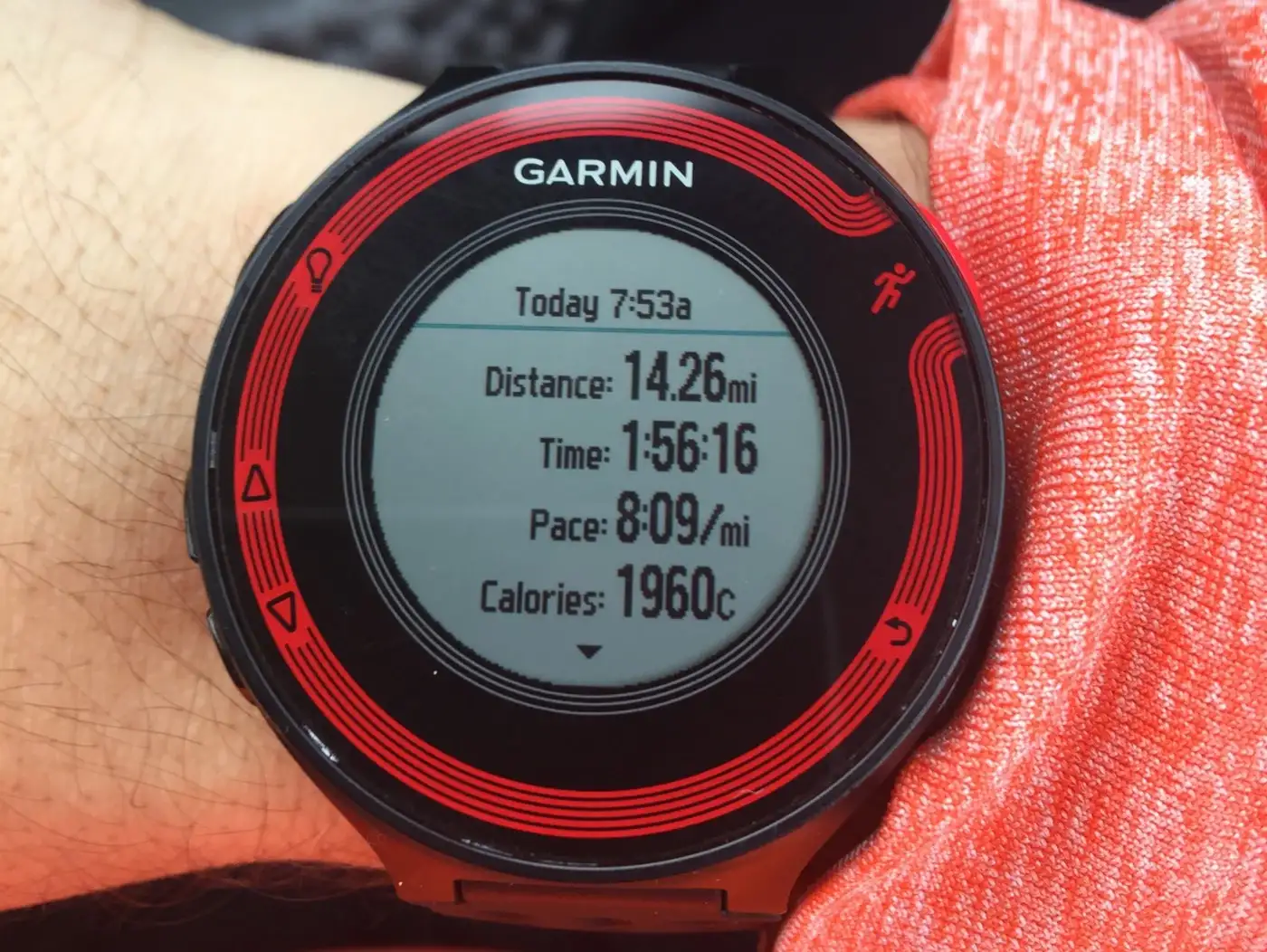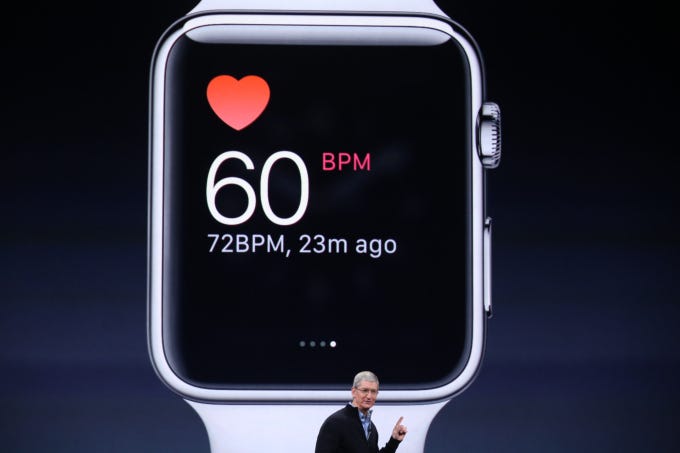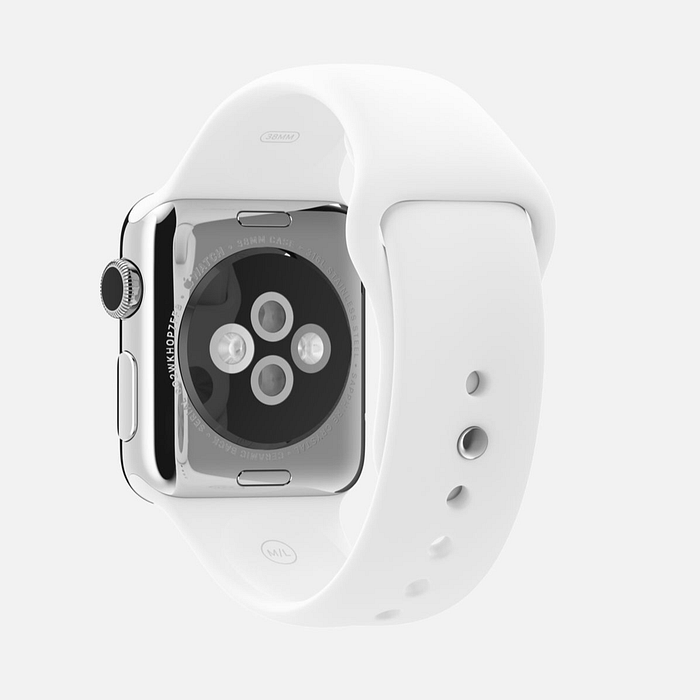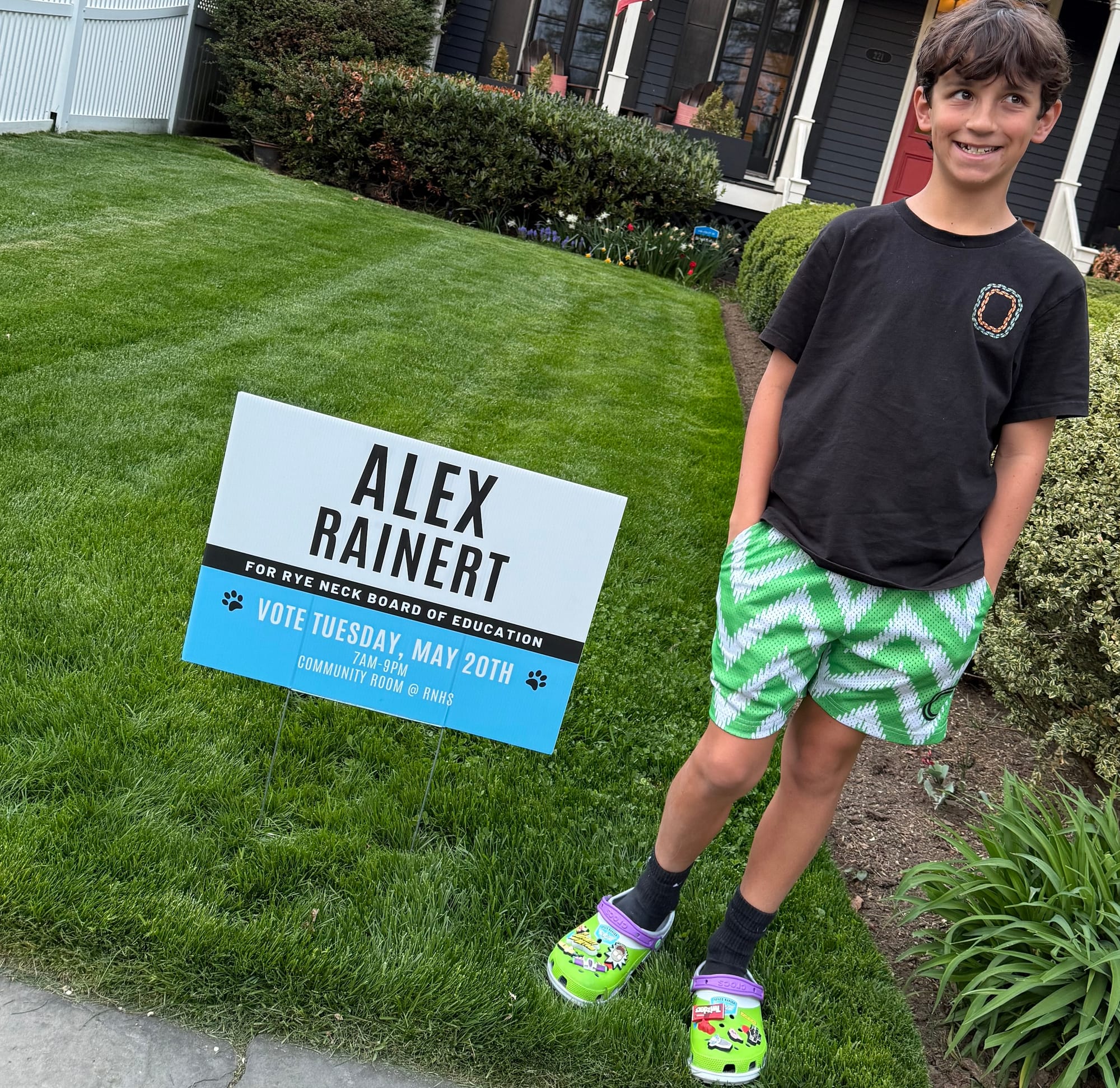A Runner’s Hope for the Apple Watch

(originally posted on Medium)
This past weekend I ran my best half marathon ever by ~3 minutes and I owe most of it to the Garmin running watch above that I borrowed from my wife.
Over the years, I’ve been a heavy user of the Nike Running and Runkeeper apps and while the audio updates they provide on pace and distance are certainly better than nothing, they’re too infrequent to really have a material impact on my runs. I’m also not someone who’s interested in pulling out my phone every few minutes to check on my numbers so I’ve been limited to what I can get through my earbuds (and to be honest, having more audio updates would start to really disrupt my music/podcast game).
Like many of the health and fitness products to date, Nike and Runkeeper have gotten much better at generating and collecting data for me (which I love) but they stop short of giving me a real window in the why behind my runs to help me understand, in real-time and over time, what’s working and not working for me.
During the race this past Sunday, being able to glance at my wrist for Current Pace/Average Pace/Distance whenever I wanted was fantastic (Note: I’ve found both the Garmin and the apps to have varying degrees of accuracy for distance covered). Seeing my live Heart Rate and Heart Rate Zones (coming via chest strap) also helped me know how hard I was exerting myself and when there might be a little more for me to give, even if I felt totally gassed. Finally, the fast & slow pace alerts were a total gamechanger as they provided actionable, contextual information in real-time, allowing me to make adjustments that saved seconds in the moment and crucial minutes over the course of the race.
“Personalized, contextual information in real-time.”
This weekend’s great race experience got me really excited about a clear use case and benefit of the upcoming Apple Watch — something that many have astutely pointed outaren’t totally obvious. While its a big drag that you’ll still need to bring your phone on runs with the Apple Watch (which you don’t for the Garmin), if developers can mimic this glanceable information and personalized alerts, runners will love it.
The biggest question that still strangely remains open even after two launch events are the details around what kind of control developers will have over leveraging Taptic feedback and Heart Rate data. The latter was strangely limited to a passing screenshot at the last keynote, the latter not even getting a mention during the Christy Turlington Burns training montage.

Based on what we know it seems like itshouldbe possible for, say, a Nike or Runkeeper to offer a quickly glanceable view of the pace and distance numbers that are already available in their apps. Providing an option to then set slow/fast pace thresholds to get buzzed for seems obvious.

During the second keynote we got a whole video about alumi-n-i-um, but not a word about what all the engineering and design that went into the sexy back of these devices will enable for user (or developers, for that matter). With all the work that went into crafting the back of the watches, presumably you can see *some* kind of Heart Rate + HR Zones info, even if it’s only at certain intervals. However, how coarse these intervals are will directly impact how genuinely useful they are, though, and we know how much of a hot topic battery life is for the watch…
While Heath & Fitness is repeatedly touted as one of the three pillars of the Apple Watch, there’s a lot we still don’t know about what’s going to be possible to serve that vertical outside of the core Apple apps. As someone who’s already excited about the Apple Watch for a few reasons, my recent experience with the Garmin watch has gotten me even more excited about the running-specific use case, assuming the above is possible. If that doesn’t come to pass, I know which watch I’ll be leaving at home when I run my next half in Brooklyn this May.






Discussion